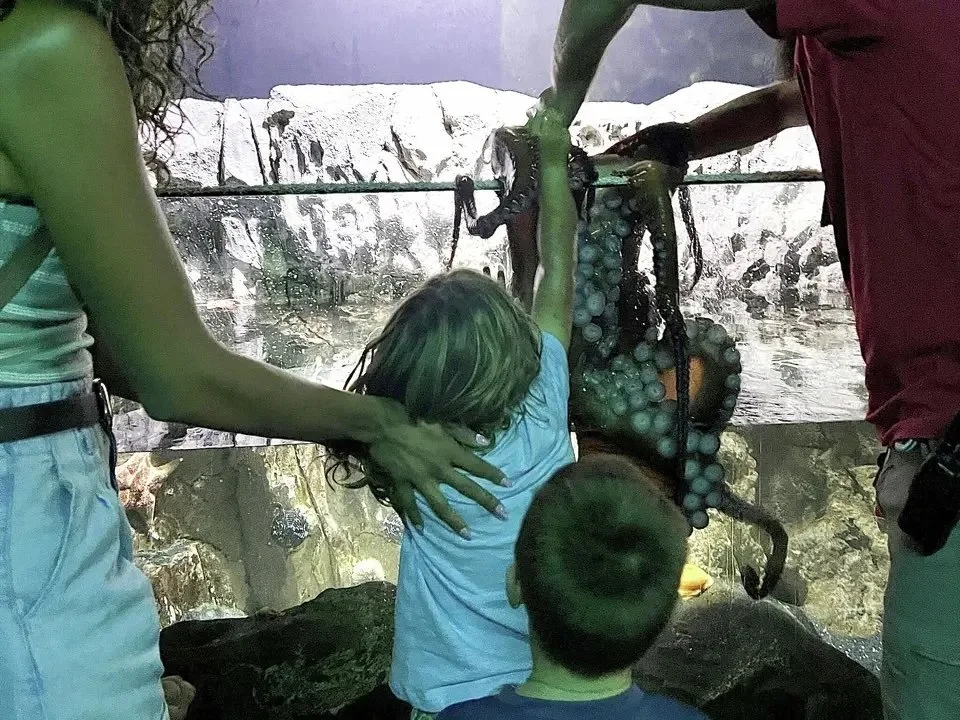When a Crisis Clings Like an Octopus: Lessons in Failed Empathy from the San Antonio Aquarium
On July 14, 2025, a six-year-old boy named Leo left the San Antonio Aquarium with more than just memories. After interacting with a giant Pacific octopus named Cthulhu, he went home with visible bruises and a frightening story. What could have been a small, manageable incident turned into a much bigger problem—not because of what happened in the tank, but because of how the aquarium chose to talk about it afterward.
This is now a textbook example of how failing to show empathy, be transparent, and take visible action can turn a single event into a long-lasting reputational crisis.
How It Went Viral
The controversy exploded when Leo’s mother, Britney Taryn, posted a TikTok video showing her son’s arm covered in distinct suction-cup bruises. In the video, she explains that the octopus wrapped around his arm at the aquarium’s touch tank and that no staff were present to help. The clip struck a nerve—drawing millions of views, widespread shares, and heated debate about safety and animal welfare practices at the aquarium.
TikTok’s algorithm thrives on strong visuals and emotionally charged narratives, and this post had both. Within hours, local news outlets picked it up, and soon the story was making national and even international headlines.
The Aquarium’s Response
In response to the viral video, the San Antonio Aquarium issued a public statement through local media, which can be read in full via KSAT’s coverage.
The statement claimed:
The incident happened because the mother leaned her son over a tall barrier to touch the octopus.
The octopus was curious, not aggressive, and staff intervened quickly.
Medical assistance was offered but declined.
An incident report was completed and signed by the mother.
However, the aquarium has not produced this incident report, despite repeated media requests. This missing evidence has become a focal point of the public’s skepticism, with many interpreting the omission as a sign that the report may not exist—or does not match the aquarium’s account.
Why the Aquarium’s History Made Things Worse
In crisis communication, an organization’s past reputation plays a huge role in how its messages are received. The San Antonio Aquarium’s record is far from spotless: multiple citations from the USDA, no accreditation from the Association of Zoos and Aquariums (AZA), and years of critical press coverage.
This history means the public is already skeptical. When you have a shaky reputation, defensive statements—especially ones that can’t be fully verified—often backfire.
The Missing Empathy
One of the first rules in any crisis is simple: show that you care. Even if you believe you’re not at fault, expressing concern for the person affected is critical.
The aquarium’s statement did not do that. Instead, it opened by disputing the mother’s account and suggesting she acted unsafely. Without indisputable proof, this approach comes across as blaming the victim—and in a case involving a child, that’s a losing strategy. Almost a month later, the incident is still getting media coverage as the mother claims the aquarium’s statement is ‘defamatory’ and is now using incident as a springboard to potentially become an advocate for animal rights.
Missed Opportunities to Build Trust Beforehand
Organizations that work with animals in public settings can strengthen their credibility before a crisis by building partnerships with respected, science-based animal welfare organizations. While PETA was quick to criticize the aquarium, there are less polarizing groups—like American Humane Society or the Global Federation of Animal Sanctuaries—that help facilities set and meet high standards.
If the aquarium had been working with such groups, those partners might have spoken up in its defense. Instead, it faced the controversy alone, with no credible allies in the conversation.
What the Aquarium Could Have Done Differently
Drawing from best practices in crisis communication, a stronger response might have looked like this:
Lead with empathy: “We are deeply sorry for the distress Leo and his family experienced.”
Be transparent: Release the incident report and any other relevant documentation immediately.
Announce corrective actions: Commit to more staff at interactive exhibits, clearer safety signage, and a review of protocols.
Engage external experts: Partner with credible animal welfare groups to review and improve practices.
This type of message doesn’t require admitting legal fault—but it does demonstrate seriousness, care, and a willingness to act.
The Bigger Lesson
This incident isn’t just about an octopus encounter—it’s about what happens when a public-facing organization with a checkered past tries to defend itself without empathy, transparency, or credible allies.
The missing incident report, the defensive tone, and the lack of visible corrective action combined to deepen the public’s mistrust. And once trust is gone, no amount of spin can bring it back quickly.
At Holler Strategic Communications, we help organizations build credibility before a crisis and respond in ways that protect it when trouble strikes. Because in moments like these, the real question the public is asking is: Do I believe you?
Is your organization ready for a reputational stress test? Contact Holler Strategic Communications to make sure the answer is yes.
Further Reading on Related Crisis Communication Concepts
Situational Crisis Communication Theory (SCCT) – Overview from the Institute for Public Relations
Image Repair Theory – Summary of William Benoit’s theory
Apologia and Strategic Apology – Accessible introduction from PR News Online
The Role of Empathy in Crisis Response – Research article from the Journal of Contingencies and Crisis Management
Building Trust Through Transparency – Harvard Business Review article

